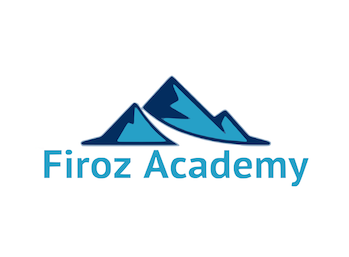
Dear Friends,
Education is a fundamental human right—and yet, many youth in Afghanistan lack educational opportunities. The literacy rate in Afghanistan is 28.1%, including 43.1% of the male population and 12.6% of the female population. In contrast, the literacy rate in the United States is 86%, nearly triple the population. At the core of our mission, Firoz Academy stresses that the shortcomings in Afghan education are due to lack of proper resources and opportunities-not a shortage in talent and passion. Firoz Academy can provide support and inspiration to help them hone their talents.
The traditional pedagogy in Afghanistan emphasizes lecture and suppresses student contribution. However, Firoz’s classes are different. Our unique pedagogy aims to shift the paradigm in Afghan education. We recognize the value of student input and participation. Our curriculum balances the core aspects of research, policy, and practice.
First, Firoz Academy believes that every student can thrive. Research consistently demonstrates the importance of setting high expectations for all students-and holding them to those standards. Our curriculum demands a thorough, accurate answer in complete sentences from each and every student within the classroom. Often, students who are behind on learning choose to opt out of questions-and educators let them. This results in lower-performing, but still talented, students falling through the cracks.
In addition to emphasizing student voice, Firoz classes are aimed at teaching practical skills, and our goals are planned with the larger picture in mind. Traditionally, many teachers teach content on a day-by-day or weekly basis; the lack of planning results in a disorganized curriculum with content/skills detached from one another and the larger goal of instilling practical skills. At Firoz, our lesson planning works backwards from the goals of practical skills in math, English, and computer literacy. Each lesson begins with a learning objective on the chalkboard and ends with assessment of student learning and growth. The learning objective sets the tone for the teacher and students alike. The objectives are manageable within an hour block, measurable with an assessment, and essential in the broader scheme of student goals. An average poor performance signals that the next day’s lesson must be tweaked to accommodate for the knowledge gap. Organizing student data is vital for tracking student growth, strengths, and weaknesses.
Third, the delivery and structure of each Firoz lesson is organized around research-proven best practices. Research highlights that lectures are an outdated pedagogy. Therefore, we utilize the “I/We/You” model. First, each lesson begins with a “teaser:” a short video, story, or discussion that makes clear why the day’s learning objective is important and valuable. Next, the teacher breaks down every skill it teachers into the logical, intuitive component steps. Students require a clear roadmap of how to solve each problem. After the teacher tackles a problem, she works with the entire class to solve the next one. Finally, students must independently attempt applying the roadmap to a novel problem. Teachers in our classrooms are fluid and flexible, tweaking the lesson plan when necessary to assess student understanding and address common issues.
Firoz classrooms are managed as places of participation, where everyone is expected to contribute. Our teachers cold-call because the truly struggling students are often not raising their hands-and these are the students who need to maximize their learning inside the classroom where they have support of a teacher and peers. These students are permitted a full five seconds of silent thinking time before they are expected to answer. We want our pupils to think critically about the problem rather than simply guessing. Educators utilize a class-wide call-and-response method to solicit a simultaneous answer from every class member. This strategy is vital to our pedagogy because it gets everyone involved orally in an engaging way and lowers the stakes around wrong answers. In addition to larger group collaboration, students in our classrooms also collaborate in smaller groups for 1-2 activities per session. Learning to work effectively on a team is a valuable skill for the workforce, so Afghan youth need to begin exercising these muscles early on.
Ultimately, the Firoz classroom is a necessary revision to traditional teaching principles in Afghanistan. We believe that teachers and students are not the problem. The issue is within the curriculum itself. Firoz teachers are flexible, aggressive, creative, and compassionate leaders, and Firoz students are engaged, persevering, and curious thinkers.
From the Firoz team.